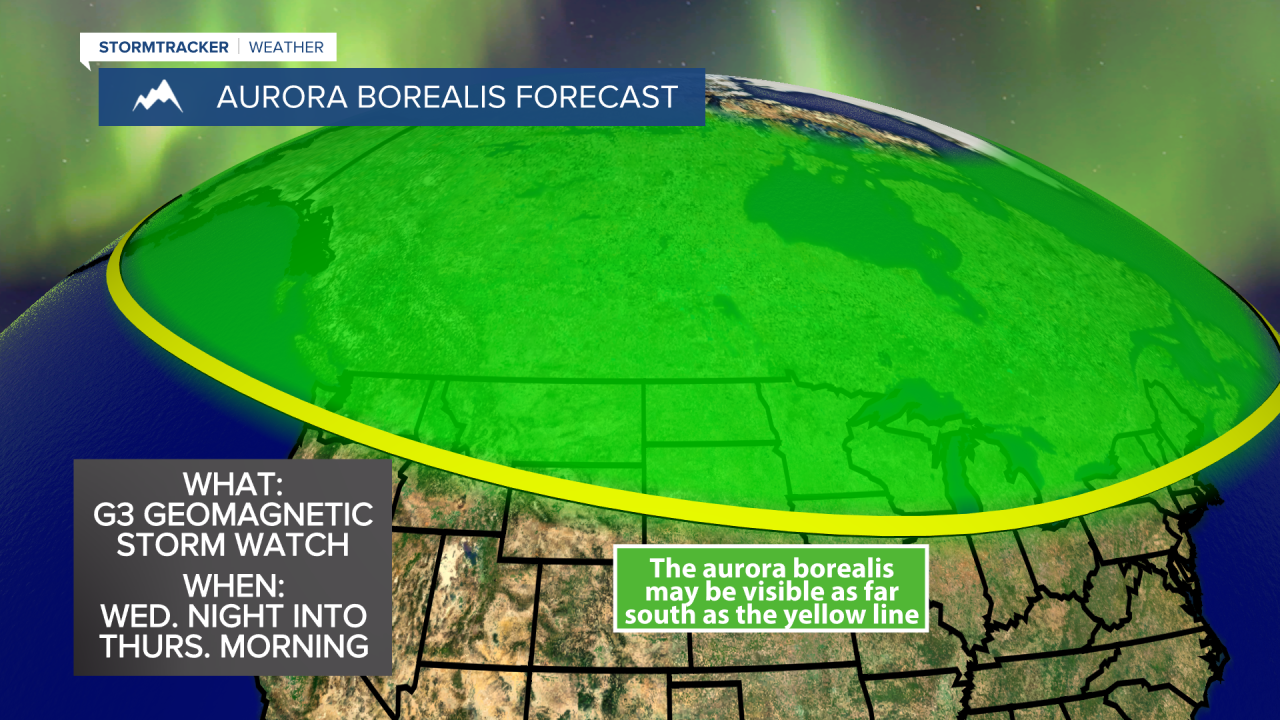GREAT FALLS — The NOAA Space Weather Prediction Center has issued a G3 geomagnetic storm watch. This watch goes into effect at 6pm MDT on Wednesday, March 30, 2022, and will remain in effect until 6pm MDT on Thursday, March 31, 2022.
This means that the aurora borealis may be visible in Montana from Wednesday night into Thursday morning.

On March 28, a Coronal Mass Ejection (CME) was launched from the sun. A second, faster CME was then launched from the sun a few hours later. This second CME is expected to catch up to and combine with the first CME before they reach Earth. The combined impact of these CMEs is expected to create a strong geomagnetic storm, which is why the G3 geomagnetic storm watch was issued.
When a G3 geomagnetic storm watch is issued, that typically means that there is a good chance that some of us in the mid-latitudes will see the aurora borealis, often referred to as the northern lights.
The geomagnetic activity level is represented by the Kp number. The larger the Kp number is, the stronger the aurora borealis is, and the further south the aurora borealis can be seen. Right now, the Kp number is expected to be around seven Wednesday night into Thursday morning, which means that the aurora borealis may be seen in all of the northern U.S., including all of Montana.

Now we get into the issue of the weather. If we have clouds around, then we will not have any chance to see the aurora borealis. Right now, the forecast for Wednesday night calls for partly cloudy skies in central Montana, which means that the cloud cover may limit who can see the aurora borealis if it ends up being visible in Montana.

Please know that the aurora borealis is hard to predict, and the impact of the CMEs may end up being stronger or weaker than what is currently forecasted. The timing of the impact of these CMEs may also change, which could impact when the best chance to view the aurora borealis is. Point being, there is no guarantee that we will see the aurora borealis in Montana Wednesday night, but right now we do have a good chance to see it. Fingers crossed!
In order to get the best viewing, make sure you are as far away from city lights as possible.
Two good resources for knowing when the Aurora Borealis might be visible in our area are the Space Weather Prediction Center and Soft Serve News.
Jim Thomas, the operator of Soft Serve News, posts frequent updates to let people know how likely it is that the Northern Lights may be visible.
If you happen to take any pictures of the aurora borealis, feel free to send them to weather@krtv.com.
TRENDING ARTICLES
- Driver cited for crashing into GF barber shop
- Crash kill Shelby mom; 3 kids seriously injured
- Down syndrome teen allowed to graduate?
- Learn about 'nuisance properties' in Great Falls
- Man sentenced for baseball bat attack



